As vaping becomes increasingly popular, people have begun to question technology’s ability to detect vapor. With the health stakes being incredibly high when it comes to vaping, smoke detectors are an important tool for detecting airborne contaminants and protecting buildings from potential fire hazards. But not all smoke detectors are created equal – can they detect vape?
The answer is yes but with some caveats. Most smoke detectors are designed to detect tiny particles in the air that can be indicative of fire or combustion [1]. Vape usually produces fewer particles than traditional cigarette smoke, making it harder to detect. However, many modern smoke detectors now feature advanced sensors that are able to distinguish between vapor and smoke, allowing them to accurately detect vape as well as other products that emit airborne contaminants.
It should also be noted that not all vapes are created equal either – different vaping devices may produce different levels of particulate matter that can affect how easily they can be detected by a smoke detector. It’s important for users to check their device’s specifications before assuming it will always be detected by a modern smoke detector.
In this blog post, we’ll explore what manufacturers say about the capabilities of different types of smoke detectors and examine if they really do have the capacity to recognize vapor in a sufficiently reliable way. Let’s get started!
Table of Contents
What Is A Smoke And Vape Sensor?

Many modern smoke and vape sensors are also equipped with carbon monoxide (CO) detection capabilities, making them even more effective for detecting multiple types of airborne toxins or combustible substances [2]. Combination smoke and CO detectors may be required in certain environments where the presence of both is highly likely, such as commercial kitchens.
Can Smoke Detectors Detect Vape?
Yes, smoke detectors can detect vape. Vape is an aerosol created by vaporizing a liquid containing nicotine and other chemicals that produce a distinct smell when inhaled. When exhaled, the vaporized nicotine and other chemicals are released into the air in small droplets, which are then picked up by smoke detectors and set off alarms.
Although typical smoke detectors will pick up on vape particles, not all of them have been designed specifically to do so. There are some specialized “vape-detecting” smoke detectors on the market that are more sensitive to small particles, making them better at detecting vape. However, these detectors can be more expensive than traditional ones.
Benefits Of Smoke And Vape Detectors:
Commercial Buildings
Commercial buildings are often required by law to have smoke detectors installed. However, these detectors will not pick up on the presence of vape smoke. This means that if there is a fire caused by vaping, it may go undetected until it is too late. Installing vape detectors can help give building owners and managers peace of mind, knowing that their property is better protected against potential fires.
Residential Homes
While most homes do have smoke detectors installed, they will not detect vape smoke. This leaves homeowners at risk in the event of a fire caused by vaping. Installing vape detectors can help protect families and give them an early warning in the event of a fire.

Offices
Like commercial buildings, offices are often legally required to have smoke detectors installed. However, those same detectors will not be able to detect any kind of vaping smoke. This can put people in the building at risk in the event of a fire caused by vaping. Installing vape detectors can help give office managers peace of mind, knowing that their property and employees are better protected against potential fires.
Hospitals And Hotels
Hospitals and hotels are two places that require extra safety precautions when it comes to fires. Because smoke detectors do not detect vape smoke, installing vape detectors in these buildings can help ensure the safety of everyone inside. This can provide an added layer of protection for guests and patients who may be at higher risk than others in the event of a fire [3].
Schools And Universities
Schools and universities often have hundreds of people who may be at risk in the event of a fire. Because smoke detectors will not detect vape smoke, installing vape detectors can help protect students and faculty from potential fires caused by vaping.
Overall, having both smoke and vape detectors installed is a great way to ensure safety for everyone involved. Smoke detectors are important for detecting traditional fires, while vape detectors provide an added layer of protection against any potential fires caused by vaping. Installing both types of detectors can give building owners, managers, and residents peace of mind knowing that their property is better protected.
Key Features To Look For In Smoke And Vape Detection Solutions:
Smoke and vape detection solutions are devices that can sense the presence of smoke or vapor from cigarettes, e-cigarettes, or marijuana in indoor environments. These solutions can help building owners and managers enforce no-smoking policies, prevent fire hazards, and protect the health and safety of occupants. However, not all smoke and vape detection solutions are created equal.
Here are some key features to look for when choosing the best smoke and vape detection solution for your needs [4]:
1) Multiple Built-In Sensors
A good smoke and vape detection solution should have multiple built-in sensors that can detect different types of smoke and vapor, as well as other environmental factors. For example, some sensors can detect cigarette, THC, and vape smoke, while others can detect carbon monoxide, carbon dioxide, and nitrogen dioxide gas. Having multiple sensors can help to reduce false alarms and increase accuracy and reliability.
2) Integrated Cloud-Based Platform
A good smoke and vape detection solution should also have an integrated cloud-based platform that can store, analyze, and display the data collected by the sensors. This can enable remote monitoring, real-time alerts, and historical reports of the smoke and vape activity in your building. You can also access the data from any device, such as a smartphone, tablet, or computer, and share it with authorized users.
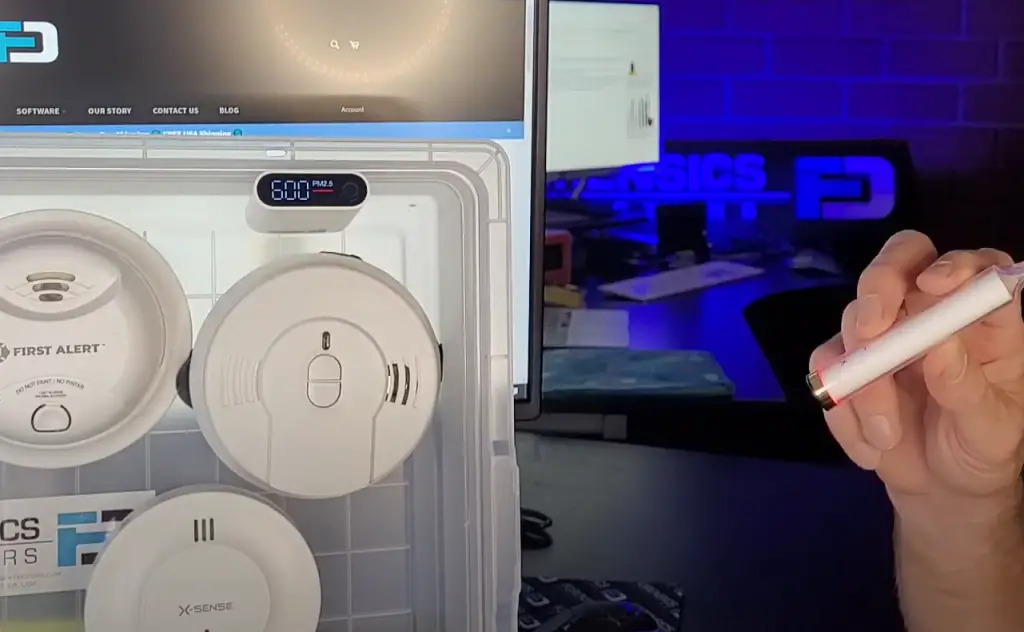
3) Discreet Tampering Alarm
A good smoke and vape detection solution should also have a discreet tampering alarm that can notify you if someone tries to damage or disable the device. This can help to prevent vandalism and ensure the device is always functioning properly. The tampering alarm should be audible or visible, but not intrusive or noticeable to the occupants.
4) Flexible Notifications And User Settings
A good smoke and vape detection solution should also have flexible notifications and user settings that can be customized to your preferences and needs. You should be able to choose how and when you want to receive alerts, such as via email, text, phone call, or app notification. You should also be able to adjust the sensitivity and threshold of the sensors, as well as the duration and frequency of the alerts.
5) Privacy Standards
A good smoke and vape detection solution should also respect the privacy of the individuals in your building. It should not use cameras, record audio, or capture any personally identifiable information (PII), such as names, faces, or voices. It should only collect and store the data that is relevant and necessary for smoke and vape detection, and comply with the applicable laws and regulations.
These are some of the key features to look for in smoke and vape detection solutions. By choosing a solution that has these features, you can ensure that you are getting the best value and performance for your investment and that you are protecting your building and its occupants from the harmful effects of smoke and vaping.
Types Of Smoke Alarm And Their Reaction To Vapor
Smoke alarms are devices that can detect the presence of smoke in the air and alert you in case of a fire. However, not all smoke alarms are the same. There are different types of smoke alarms that use different technologies and have different reactions to vapor from e-cigarettes or other sources.
Here are some of the most common types of a smoke alarms and how to spot them [5]:
Optical Alarm And How To Spot It
Optical smoke alarms – also known as photoelectric smoke alarms – work by using light scatter technology. They have a light source and a photosensitive cell inside a chamber. When smoke enters the chamber, light scatters and is picked up by the cell, causing the alarm to sound.
Optical smoke alarms are more sensitive to smoldering fires, such as those caused by cigarettes or electrical faults. They are also more likely to be triggered by vapor, especially if the vapor is dense or close to the alarm. You can spot an optical smoke alarm by looking for the letter O or the word “OPTICAL” on the device.
Heat Sensitive Alarm And How To Spot It
Heat-sensitive alarms – also known as thermal alarms – work by detecting the rise in temperature caused by a fire. They have a heat sensor that activates the alarm when the temperature reaches a certain level or changes rapidly.
Heat-sensitive alarms are more suitable for areas where smoke or vapor is expected, such as kitchens or bathrooms. They are less likely to be triggered by vapor unless the vapor is very hot or causes a sudden change in temperature. You can spot a heat-sensitive alarm by looking for the letter H or the word “HEAT” on the device.
Photoelectrical Alarm
Photoelectrical alarms – also known as combination alarms – work by using both light scatter and heat detection technologies. They have both a light source and a heat sensor inside a chamber. When smoke or heat enters the chamber, either the light scatters or the temperature rises, causing the alarm to sound.
Photoelectrical alarms are more responsive to both smoldering and flaming fires and can reduce the number of false alarms caused by smoke or vapor. They are less likely to be triggered by vapor unless the vapor is very dense, hot, or close to the alarm. You can spot a photoelectrical alarm by looking for the letter P or the word “PHOTO” on the device.
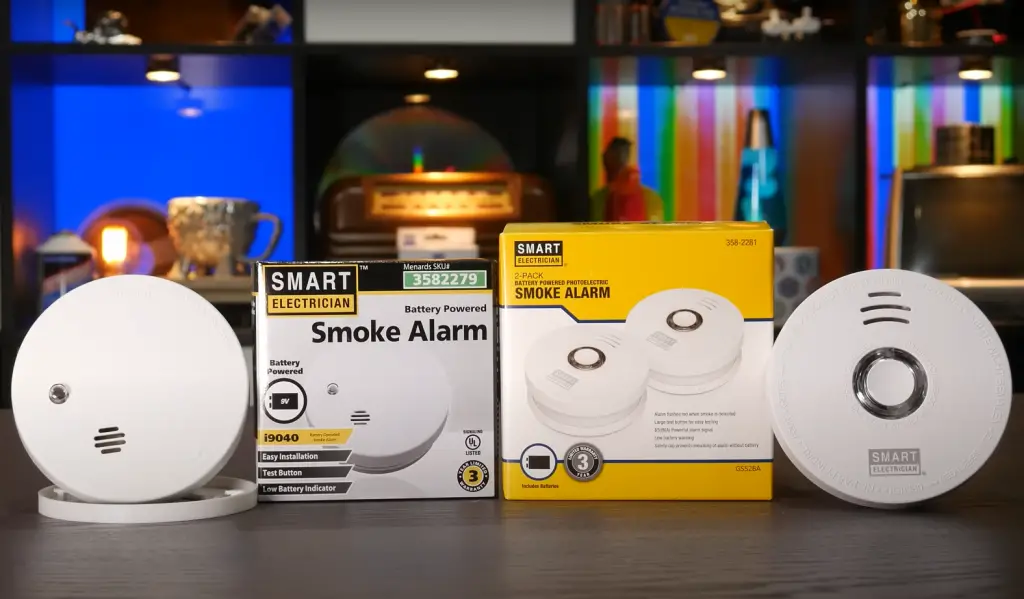
Ionization-based Detectors
Ionization-based detectors – also known as ionization alarms – work by emitting a small amount of radiation that generates a current between two charged plates. When smoke enters the chamber, it disrupts the current, causing the alarm to sound.
Which Types Of Fire Alarms Are Most Vulnerable To Vapor?
When it comes to vaping, smoke detectors may not be the most reliable source of detection. Though traditional ionization and photoelectric smoke alarms are designed to detect products from combustion – such as cigarette or cigar smoke – they are not as effective when detecting vapors from e-cigarettes. The vapors contain fewer particles than smoke, making them more difficult for a smoke detector to sense [6].
However, some fire alarm systems have been designed to accommodate vaporized substances. Specialty alarms such as air sampling and laser-based devices can differentiate between different types of particles in the air and sense even smaller concentrations of vaporized substances. For this reason, they are better able to detect vape fumes than regular fire alarms. Additionally, these specialty systems are more expensive and may not be practical for all homes or offices.
How To Vape Without Setting Off A Fire Alarm: Tips
- Avoid vaping near smoke detectors. As vaping produces vapor, which is a form of smoke, it has the potential to set off a fire alarm;
- Make sure all batteries used in your vape device are securely fastened and never leave them unattended while they’re charging. This will help reduce the risk of accidental fires started by faulty wiring or heat build-up;
- If you must vape inside, make sure that windows and doors are open so any excess vapor can dissipate quickly without triggering the fire alarm;
- Utilize air purifiers with HEPA filters in order to capture any lingering vapors that may have been released during use or from leaks in the device itself;
- Make sure your vape device is maintained and kept in good condition. Check for any signs of wear and tear on the battery, atomizer, coils, or other components at least once a week;
- Keep the wattage or temperature settings of your device low to ensure that the vapor produced isn’t too dense or hot enough to trigger a fire alarm;
By following these tips, you can enjoy vaping without worrying about setting off a fire alarm! Just remember to stay vigilant when it comes to the safety and maintenance of your vape device. Happy vaping!
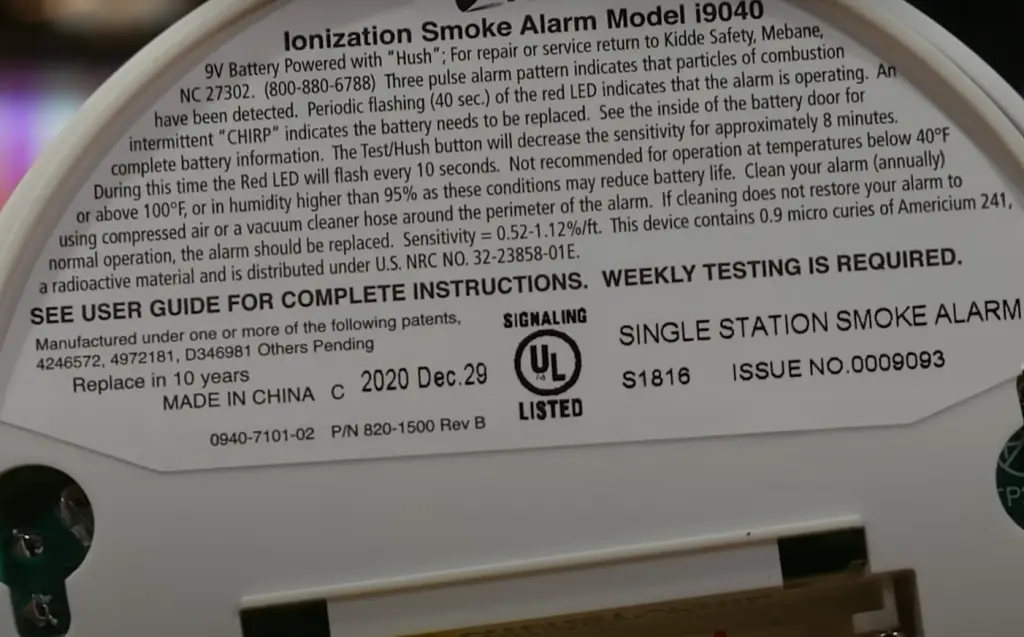
FAQ:
- Could vaping cause a fire?
Yes, vaping devices and their batteries can malfunction, leading to overheating and potentially causing a fire. This is more likely to happen if the device is damaged, the battery is overcharged, or incompatible charging equipment is used. Therefore, it is important to follow the manufacturer’s instructions for use and to never leave a charging device unattended [7].
- Could vaping set off smoke detectors on airplanes?
Yes, vaping could potentially set off smoke detectors on airplanes, as these detectors are designed to detect a variety of airborne particles, including smoke and vapor. Most airlines prohibit the use of e-cigarettes and other vaping devices on their planes.
- Could vaping set off smoke detectors in hotels?
Yes, vaping could potentially set off smoke detectors in hotels, especially if the room is poorly ventilated or the detector is particularly sensitive. Some hotels have policies that prohibit smoking and vaping in their rooms, and failure to comply could result in fines or other penalties.
- How to vape at home without setting off a smoke detector?
Vaping at home without setting off a smoke detector can be done by ensuring good ventilation in the room where you are vaping, avoiding excessive vaping, and exhaling the vapor away from the detector. You can also consider using an air purifier to help remove any residual vapor in the air.
- Should you ever turn off a fire alarm to vape?
No, it is never safe to turn off a fire alarm to vape. Smoke detectors and fire alarms are important safety devices that are designed to protect you and your property in the event of a fire. Turning off a fire alarm to vape could leave you vulnerable to potential hazards and put your safety at risk [8].
- What is a vape index?
A vape index is a tool used to measure the presence of e-cigarette aerosols in the air. It is a measure of the concentration of aerosols and can be used to assess the potential health risks associated with vaping.

- What can trigger false positives for vape detectors?
Vape detectors can be triggered by a variety of factors, including air pollution, cleaning products, cooking fumes, and other types of aerosols in the air. It is important to ensure that vape detectors are calibrated properly and that they are set to trigger only when there is a significant concentration of e-cigarette aerosols in the air.
- What happens when a vape detector goes off?
When a vape detector goes off, an alarm will sound, alerting people in the area to the potential presence of e-cigarette aerosols. Depending on the setting, this could result in additional monitoring or enforcement action to ensure compliance with vaping policies.
- How do you not get caught by vape detectors?
The best way to avoid being caught by vape detectors is to follow policies and regulations related to vaping in the area you are in. This may include avoiding vaping in prohibited areas, using ventilation to reduce the concentration of aerosols in the air, or using devices that are designed to minimize aerosol production.
- Is it illegal to vape indoors?
The legality of vaping indoors depends on the laws and regulations of the specific area you are in. In some places, vaping indoors is prohibited, while in others it may be allowed in certain designated areas. It is important to check local laws and regulations before vaping indoors [9].
- Will a vape beep in security?
Vapes may beep in security if they have a button or feature that activates the device, such as a power button or a puff sensor. However, most vapes will not beep or trigger alarms in security scanners.
- Do vapes trigger scanners?
Vapes may trigger some types of security scanners, especially those that are designed to detect explosives or other hazardous materials. However, most standard security scanners used in public places are not likely to detect vapes or their components.
- How long can you detect vaping?
The duration that vaping can be detected in the air depends on several factors, including the concentration of aerosols in the air, the ventilation in the room, and the type of vaping device being used. Typically, the odor and presence of aerosols from vaping can linger for a few hours after use.
- Can you smell vaping in a house?
Yes, it is possible to smell vape in a house, especially if there is poor ventilation. The odor of e-cigarette aerosols can linger in the air and on surfaces, making it noticeable to others.
- How are kids hiding vapes?
Kids may hide vapes in a variety of ways, including in their pockets, backpacks, or in discreet locations in their rooms. Some may also use accessories or disguises to conceal the device, such as using a phone case that looks like a vape or a hoodie with a hidden pocket.
- Can you hit a vape on a plane?
No, it is not allowed to use e-cigarettes or other vaping devices on planes, as most airlines prohibit smoking and vaping on their flights.

- Is vaping easier on the lungs?
While vaping is generally considered less harmful than smoking tobacco, it is not necessarily “easier on the lungs”. E-cigarette aerosols can contain harmful chemicals and particles that can cause respiratory irritation and inflammation, and long-term use may have adverse health effects [10].
-
- Do vapes go off in metal detectors?
Vapes may not necessarily go off in metal detectors, as these devices are designed to detect metal objects and not aerosols. However, some vaping devices may contain metal components that could be detected by the scanner.
- How do you detect vaping in school?
Detecting vaping in schools can be done through a combination of visual observations and the use of vape detectors. Vape detectors are devices that can detect the presence of e-cigarette aerosols in the air and can alert school staff to potential vaping incidents. However, it is important to note that vape detectors may not be foolproof and may have limitations in detecting all types of vaping devices and aerosols.
Useful Video: Does Vaping Set off Smoke Detectors?
Conclusion:
Traditional smoke detectors are designed to detect particles created by combustion, such as those found in fires. However, vaporized liquids from vaping do not create a significant amount of these particles, and therefore would not be detected by a traditional smoke detector.
It is possible to find specialized vape detectors on the market which are designed to sense the presence of vaporized liquids and alert you that someone has been using a vape device. These detectors may use technology like infrared or ultrasonic sensors or chemical sensors to detect the presence of vapors, so they can be used to help people monitor vaping activity in their homes or business premises.
It’s important to note that while these specialized vape detectors can be useful, they are not foolproof. They may not be able to detect very small amounts of vapor, and they can also give false positives if there are other things in the environment that can produce similar vapors (such as candles or incense). Nevertheless, these detectors can be helpful for people who want to keep an eye out for vaping activity in their homes or workplace.
References:
- https://www.smokegreen.ie/blog?journal_blog_post_id=243
- https://info.verkada.com/iot-smart-sensors/smoke-thc-vape-detectors
- https://www.vuse.com/gb/en/know-your-vape/do-vapes-set-off-smoke-alarms
- https://www.blu.com/en-GB/blog/vape-devices-and-e-cigs/do-ecigarettes-set-off-fire-alarms
- https://vapoholic.co.uk/2022/07/07/do-vapes-set-off-smoke-alarms-its-time-to-find-out/
- https://thefirefly.com/blogs/news/can-vaping-set-off-a-smoke-alarms
- https://info.verkada.com/iot-smart-sensors/smoke-thc-vape-detectors/
- https://www.forensicsdetectors.com/blogs/articles/the-best-vape-detector
- https://halodetect.com/
- https://vapoholic.co.uk/2022/07/07/do-vapes-set-off-smoke-alarms-its-time-to-find-out

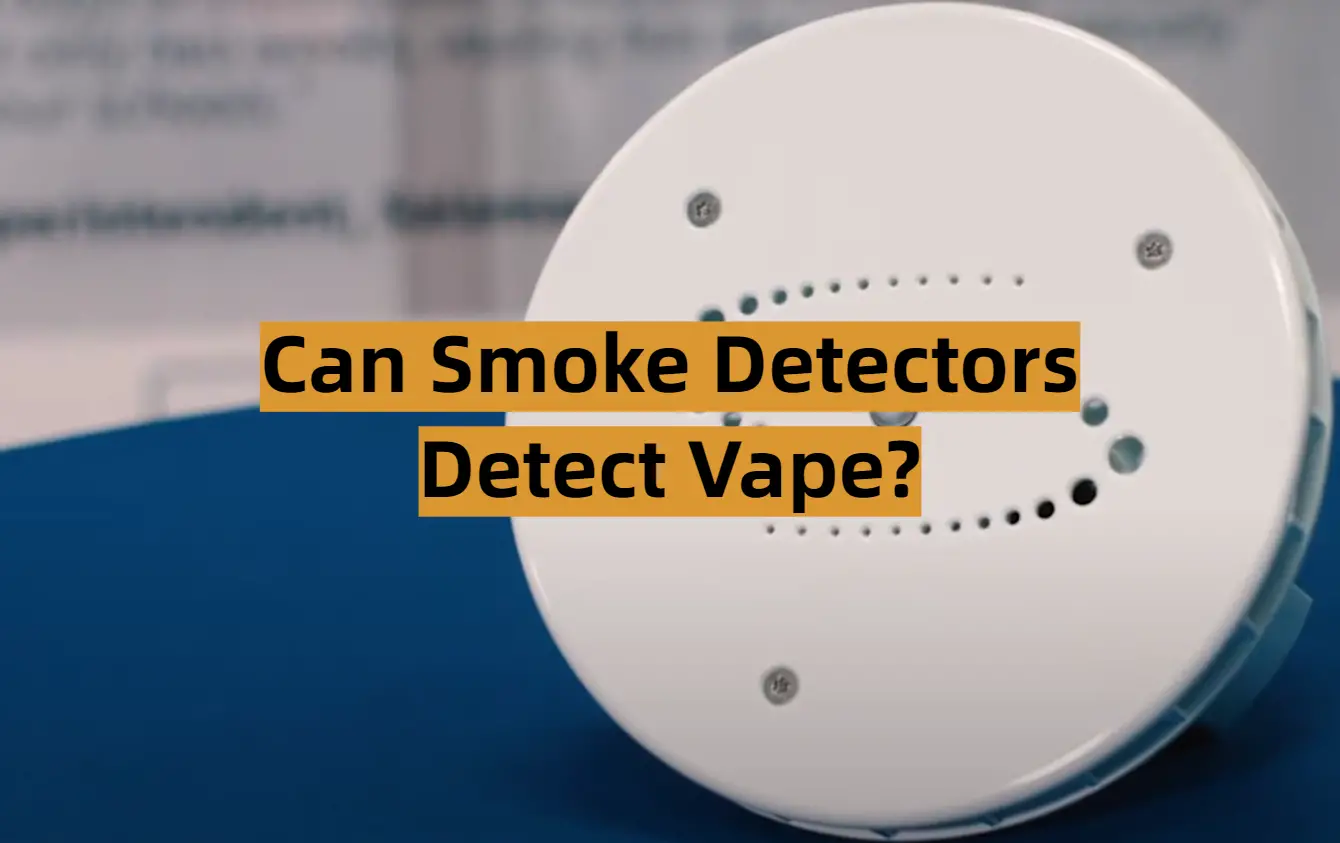



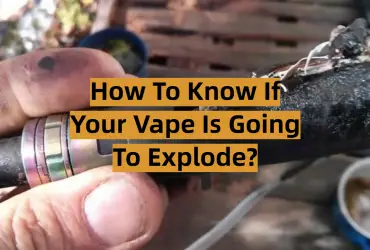




Leave a Review